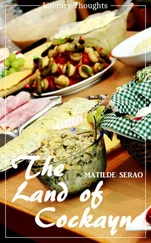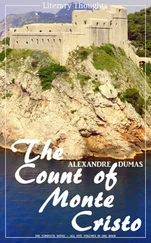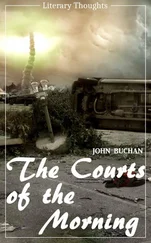Racial Composition.—Regiments of native cavalry and battalions of infantry are organised on the class system. They may be composed entirely of one class, when they are called "Class" regiments, or they may be recruited from three or four classes, kept apart in separate companies, when they are styled "Class Company" regiments. For instance, the 14th Sikhs, composed of eight companies of Sikhs, would be an example of the former, while the 30th Punjab Infantry, composed of four companies of Sikhs, two of Dogras, and two of Punjabi Mussalmans, would serve as an example of the latter.
Forage and Rations.—The native soldier pays for his own food and, in the Silladar Cavalry, also for the upkeep of his horse. A regimental bazaar is attached to each corps, from which the men purchase their rations. When the cost of the daily ration exceeds Rs. 3.8.0 per month, compensation is granted by the Government for the difference. On field service the native soldier draws free rations, and in addition to his ordinary pay is granted a special monthly allowance.
Quarters.—The quarters of native troops, except in Burma and on the North-west Frontier, are ranges of huts, called lines, which have to be built and kept in order by the corps temporarily occupying them. To defray the cost of repairs, the Government makes an allowance, which is paid monthly.
Education.—Each regiment and battalion has a school, at which attendance is voluntary. Sepoys are required to pass an easy examination in reading, writing, arithmetic and drill before promoted to non-commissioned rank.
Bands.—These are maintained by infantry, but not by cavalry. All Gurkha battalions and many corps in which Pathans are enlisted have pipers as well as bandsmen, buglers and drummers. The pipers make their own pipes, in imitation of the Scottish bagpipes, and acquire considerable efficiency under the instruction of Highland bandmasters.
Furlough and Leave.—The popularity of service in the native army is largely due to the liberal manner in which furlough and leave are granted.
Dress.—The dress of the native army is picturesque and distinctive. Kilmarnock caps are worn by the Gurkhas and Garhwalis, otherwise the universal headdress is the turban or pugri. In the Silladar Cavalry all uniforms are provided under regimental arrangements. In the other regiments clothing is issued by the clothing factories at Calcutta and Madras, but the khaki uniform, and all necessaries, such as great-coats, boots, pugris, haversacks, water-bottles, bedding, cooking-pots, etc., are purchased or manufactured regimentally, and may be had from the quarter-master at fixed prices.
Most of our native Indian soldiers are either peasant proprietors or cultivators, and on retirement from service return to their former employment. Some, however, accept minor posts with the civil administration, such as those of caretakers or messengers.
The Indian soldier is generally excellent in sports and athletics. The skill of the Sowar in tent-pegging, lime-cutting, and his daring feats of horsemanship are well known. In the infantry, wrestling is a favourite amusement, and certain classes, more especially Gurkhas, are keen sportsmen in the all-round sense of the word.
The military and agricultural classes of India are seen at their best in the native army. Enthusiastic in his profession, endued with great pride of race and considerable spirit, the native soldier feels that there is a camaraderie and a community of interests between himself and his British officers which are wholly lacking in his relations with civil officials. Daily intercourse in the lines, and in various games and sports, affords opportunities for mutual acquaintance, and enables British officers to acquire that personal influence over their men which has been so largely responsible for the brilliant results achieved by most of our great men of India.
There are three great classes of Sikhs: the Sikh by race, the Sikh by religious sect, and the Sikh by political conviction. They are, however, divided tribally as follows:—
The Jat Sikhs,
The Khattri Sikhs,
The Kamboh Sikhs,
The Lobana Sikhs,
The Sikh Chuhras or Mazhbis,
The Sikh Tarkhans,
The Kalal Sikhs.
The Jat Sikhs.—Our Jat recruits are drawn from the Eastern Jats, a race of hardy husbandmen. They are, so to speak, a clan of Indian agricultural peasantry. They came originally from the highlands of Scythia. These men possess the necessary instincts of the soldier, and their history has been marked by stern, hard fighting.
The Khattri Sikhs.—These are the merchant caste of the Punjabis.
The Kamboh Sikhs.—These make excellent soldiers, being of very fine physique and possessing great courage. They have always been noted for their cunning strategy, which now, being far less "slim" than in former times, has developed into the permissible strategy of war.
The Lobana Sikhs.—These are the social equals of the Jats.
The Sikh Chuhras or Mazhbis.—The term "Mazhbis" has now come to be applied to all Chuhras who have adopted Sikhism as their religion. The true Mazhbis are descendants of certain Chuhras, who rescued in a heroic fashion the body of Gurai Teg Bahadur from the Mahomedans, thus saving it from being dishonoured. In return for this, Gurai's son, Govind Singh, bestowed upon them the title of "Mazhbis Rangreeta" ("Chosen Brave"), and invited them into the fold of Sikhism. Therefore the name Mazhbis belongs properly to the descendants of these particular Chuhras' families. Inspired as they are by the glorious history and traditions of Khalsa, these men make excellent soldiers.
Sikh Tarkhans.—Tarkhans are carpenters by caste and profession. They are intelligent and industrious men, of whom about 20 per cent. are Sikhs by religion, the rest being Hindu or Mahomedan. Sikh Tarkhans, if carefully recruited, could supply a fair number of good soldiers.
Kalal Sikhs.—The Kalals are by caste and profession distillers and wine merchants on a small scale. Twenty-five per cent. of these have now embraced Sikhism, the rest being Hindu or Mahomedan; the Hindus being about 50 per cent. of the whole, and the Mahomedans about 25 per cent. Sikh Kalals are often styled Alhuwalias, from the fact that the famous and important Alhuwalia Misb was founded by the Kalal convert to Sikhism. The Chiefs of Kapurthala have always been Kalals by descent, and, since the rise of the Sikh Kalals to political prominence, they have largely given up their original profession to take to the more respectable avocations of merchandise and agriculture. The Kalals have a reputation for "enterprise, mercy and obstinacy"; and the Sikh Kalals make good soldiers, being of good physique and great hardihood.
The stately, manly Sikh has a character all his own. He has the manly virtues of honesty, industry, and tenacity well developed. He is independent, patient, and full of methodical, laborious energy; and, of all the Sikh tribes of whom this description is more or less true, the Jat may be particularly mentioned.
The Sikh race is drawn from the Punjab tribes, such as the Jat and Khattri, who from time immemorial have been renowned for their sturdy grit and independence. It may perhaps be said that the Jat-Sikh combines especially the best qualities of the Pathan races with those of the Sikh tribes.
All the Punjab races are, as a rule, impatient of control, but the Jat is particularly so, exercising in his impatience a fine quality of individual freedom. This, together with the fact that he is neither truculent nor turbulent, provides him with one of the finest qualities of a well-disciplined soldier, in contradistinction to the machine-made soldier. Well understood, he can be, and has been, well managed. Encouraged to continue in his own peaceful agricultural ways, he is reasonable and contented in doing his work; but if he is roused by what he considers unjust aggression, or any unsolicited interference, he is a dangerous man to deal with.
Читать дальше












